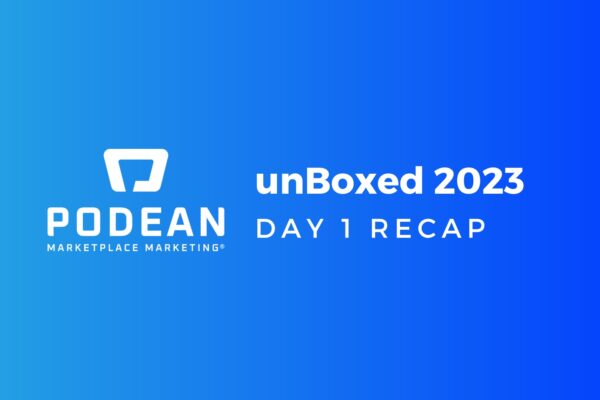Categories
Latest Posts

Skai Director of Sales joins Podean as Director of Retail Media Partnerships
September 12, 2023

Podean Turkey launches & unveils ecommerce research
August 5, 2022
Amazon CEO Jeff Bezos has always been a strong proponent of the “Day 1” business outlook. In fact, he’s preached the idea so often that it has become one of the company’s internal mantras. The Day 1 mentality means that even though Amazon is nearly 25 years old, the company treats every day like it’s the first day of their new startup.
Day 1 is an incredible idea – it’s a way to stay relevant and on your toes. Every successful startup begins with a solution to some problem or need. A promising startup focuses on what the consumer needs, and how they want it, even if they don’t know it yet.
“The outside world can push you into Day 2 if you won’t or can’t embrace powerful trends quickly. If you fight them, you’re probably fighting the future. Embrace them and you have a tailwind”—Jeff Bezos
Bezos suggests that strong trends are not that hard spot in today’s world. Many big companies get caught up with what has worked for them in the past instead of embracing what the present and future call for. That’s what Day 1 is all about; attacking every day by searching for ways to become and stay relevant to your customers.
Discover more about Amazon in our Explained series:
- Amazon’s Bricks and Mortar strategy
- Amazon’s Philanthropy
- The Amazon Marketing Cloud
- A brief history of Amazon
- Timeline of Amazon devices
Does it work?
The concept of Bezos Day 1 mentality has received its fair share of backlash within the business community. The chief argument against the Day 1 ideology is that most companies and startups don’t know the first thing about anything when they first begin; so why stay in that awkward growing phase? The answer to that is simple: When you treat every day like it’s Day 1, you’re not simply sitting stagnant on the information you had at the start. You’re building on what you’ve learned, and you continue to evolve. Amazon certainly hasn’t been stuck in the past – quite the opposite. Amazon is now worth north of $1 trillion and doesn’t show any signs of slowing down.
When you look at the incredible success of Amazon, it’s hard to ignore the idea of Day 1. If it works for Jeff Bezos and the second largest company in the world, there has to be something to it. Bezos holds that it isn’t enough to have Day 1 be in your mission statement – it has to be a constant reminder. That’s why the main office building that Bezos works out of is named Day 1.
Day 2
Bezos is dead-set on maintaining a business culture that will continue to innovate, create and look outwardly towards successful trends. Day 2 brings comfort and contentment with how things have been. That’s why Amazon maintains a “never Day 2” attitude.
“Day 2 is stasis. Followed by irrelevance. Followed by excruciating, painful decline. Followed by death. And that is why it is always Day 1.” -Jeff Bezos
To hold to the Day 1 mentality, you cannot be afraid of change. You must recognize how you can create a better future for your company. The absolute best way to do this is to hire the right talent around you. It may cost more initially, and it might be hard to find the right people. But when you build a team of innovative professionals, the possibilities are endless.
Be sure to allow your team leaders and other specialists freedom to do their job creatively. The best change happens when you allow the best minds access to their potential.
Day 1 Keys
In a 2016 letter to shareholders, Bezos outlined the following four keys to maintaining the Day 1 mentality.
1. True Customer Obsession
“Even when they don’t yet know it, customers want something better, and your desire to delight customers will drive you to invent on their behalf.”
Here we learn that it’s just not enough to supply a product that the customer needs. To be truly relevant to the consumer, you must provide an experience and a product before they even know they want it! You must research, observe and obsess over the clients.
2. Resist Proxies
“As companies get larger and more complex, there’s a tendency to manage to proxies. This comes in many shapes and sizes, and it’s dangerous, subtle, and very Day 2.”
No amount of calculations can guarantee repeated results in business. If you focus on the process, you are likely to lose sight of the outcome.
3. Embrace External Trends
“Big trends are not that hard to spot (they get talked and written about a lot), but they can be strangely hard for large organizations to embrace.”
This ties right into the idea of avoiding proxies or algorithms. Allow your management teams freedom to embrace trends – even further, require them to embrace trends!
4. High-Velocity Decision Making
“Day 2 companies make high-quality decisions, but they make high-quality decisions slowly. To keep the energy and dynamism of Day 1, you have to somehow make high-quality, high-velocity decisions.”
Can you see the theme here? Don’t let your business get bogged down by procedures at the cost of missing opportunities.
The Day 1 mentality has had a major impact on Amazon’s success and proves itself as an excellent business practice for all who can commit and stick to it.
Discover more about Amazon in our Explained series:
- Amazon’s Bricks and Mortar strategy
- Amazon’s Philanthropy
- The Amazon Marketing Cloud
- A brief history of Amazon
- Timeline of Amazon devices
Podean’s unBoxed 2023 Recap: Day 1
LiveCraft streaming studio opens in LA
About Podean
Latest Posts

Skai Director of Sales joins Podean as Director of Retail Media Partnerships
September 12, 2023












